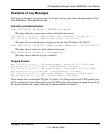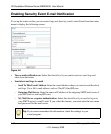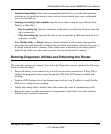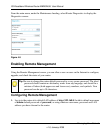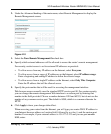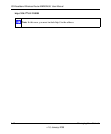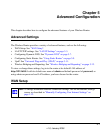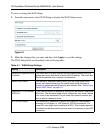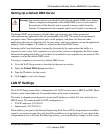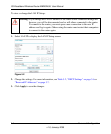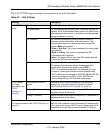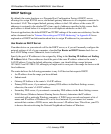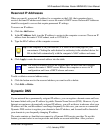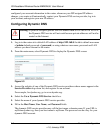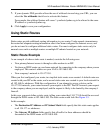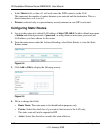
3G Broadband Wireless Router MBR624GU User Manual
Advanced Configuration 5-3
v1.0, January 2009
Setting Up a Default DMZ Server
The default DMZ server feature is helpful when you are using some online games and
videoconferencing applications that are incompatible with NAT. The router is programmed to
recognize some of these applications and to work properly with them, but there are other
applications that may not function well. In some cases, one local computer can run the application
properly if that computer’s IP address is entered as the default DMZ server.
Incoming traffic from the Internet is normally discarded by the router unless the traffic is a
response to one of your local computers or a service that you have configured in the Ports screen.
Instead of discarding this traffic, you can have it forwarded to one computer on your network. This
computer is called the default DMZ server.
To assign a computer or server to be a default DMZ server:
1. Go to the WAN Setup screen as described in the previous section.
2. Select the Default DMZ Server check box.
3. Type the IP address for that server.
4. Click Apply to save your changes.
LAN IP Settings
The LAN IP Setup screen allows configuration of LAN IP services such as DHCP and RIP. These
features can be found under the Advanced heading in the router main menu.
The router is shipped preconfigured to use private IP addresses on the LAN side, and to act as a
DHCP server. The router default LAN IP configuration is:
• LAN IP addresses: 192.168.0.1
• Subnet mask: 255.255.255.0
These addresses are part of the Internet Engineering Task Force (IETF)-designated private address
range for use in private networks, and should be suitable in most applications. If your network has
a requirement to use a different IP addressing scheme, you can make those changes in this screen.
Warning: For security reasons, you should avoid using the default DMZ server feature.
When a computer is designated as the default DMZ server, it loses much of
the protection of the firewall, and is exposed to many exploits from the
Internet. If compromised, the computer can be used to attack your network.



